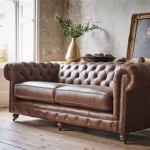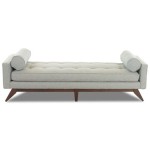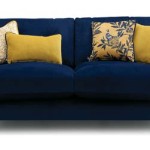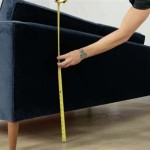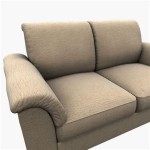Best Sofa Cover Material: A Comprehensive Guide
Selecting the optimal sofa cover material is a critical decision that impacts the longevity, aesthetic appeal, and overall comfort of a sofa. The ideal material must strike a balance between durability, ease of maintenance, visual compatibility with the existing décor, and cost-effectiveness. This article provides a detailed analysis of several common sofa cover materials, examining their respective strengths and weaknesses to assist in making an informed choice.
Understanding Material Properties and Performance
The performance of a sofa cover material is determined by its inherent properties. These properties include fiber content, weave type, finish, and inherent resistance to wear and tear. Understanding these attributes is paramount in determining the suitability of a material for a specific lifestyle and application.
Fiber content dictates many characteristics, such as durability, stain resistance, and texture. Natural fibers, such as cotton and linen, offer breathability and a soft hand, but may be prone to wrinkling and staining. Synthetic fibers, such as polyester and microfiber, are generally more durable, stain-resistant, and easier to maintain. Blended fabrics combine the advantages of both natural and synthetic fibers, often offering a compromise between comfort and performance.
Weave type influences the texture, durability, and drape of the fabric. Tight weaves, such as twill and denim, offer increased durability and resistance to wear. Looser weaves, such as velvet and jacquard, provide a luxurious feel but may be more susceptible to snags and pulls. The choice of weave should align with the intended use and level of traffic the sofa will experience.
The finish applied to a fabric can significantly enhance its performance. Stain-resistant finishes, such as Scotchgard, create a barrier that prevents liquids from penetrating the fibers, making the fabric easier to clean. Water-repellent finishes offer similar protection against moisture damage. These finishes can extend the life of the sofa cover and reduce the frequency of cleaning.
Examining Popular Sofa Cover Materials
A wide range of materials are available for sofa covers, each with its unique set of advantages and disadvantages. The following sections provide a detailed examination of several popular options.
Cotton: Cotton is a natural fiber known for its softness, breathability, and affordability. It is a comfortable choice for everyday use and is available in a wide variety of colors and patterns. However, cotton is prone to wrinkling, staining, and fading. It also lacks the durability of some synthetic fibers. Cotton sofa covers are best suited for low-traffic areas and households without pets or small children. Consider pre-shrunk cotton to minimize shrinkage after washing.
Linen: Linen is another natural fiber prized for its luxurious texture and durability. It is stronger than cotton and offers excellent breathability, making it a comfortable choice for warm climates. Linen is also naturally resistant to moths and mildew. However, linen is prone to wrinkling and staining and can be more expensive than cotton. Linen sofa covers require careful maintenance and are best suited for formal living spaces.
Polyester: Polyester is a synthetic fiber known for its durability, stain resistance, and affordability. It is resistant to fading, wrinkling, and shrinking, making it a low-maintenance option. Polyester is also available in a wide variety of colors and patterns. However, polyester is less breathable than natural fibers and may feel less comfortable in warm weather. Polyester sofa covers are a versatile choice for high-traffic areas and households with pets or small children.
Microfiber: Microfiber is a synthetic fabric made from tightly woven fibers, resulting in a soft, suede-like texture. It is highly durable, stain-resistant, and easy to clean. Microfiber is also resistant to fading and shrinking. However, microfiber can attract pet hair and lint, requiring frequent vacuuming. Microfiber sofa covers are a good choice for households with pets and for those seeking a comfortable and low-maintenance option.
Velvet: Velvet is a luxurious fabric characterized by its soft, plush pile. It is available in a variety of fibers, including cotton, silk, and synthetic blends. Velvet offers a rich and elegant look and feel. However, velvet is prone to crushing and staining and requires careful maintenance. Velvet sofa covers are best suited for formal living spaces and low-traffic areas.
Leather: Leather is a natural material known for its durability, luxurious appearance, and unique patina. It is resistant to stains, scratches, and tears. Leather is also easy to clean and maintain. However, leather can be expensive and may require special cleaning products. Leather sofa covers are a durable and stylish choice for both formal and informal living spaces.
Faux Leather: Faux leather, also known as pleather or vegan leather, is a synthetic material designed to mimic the look and feel of genuine leather. It is typically made from polyurethane (PU) or polyvinyl chloride (PVC). Faux leather is more affordable than genuine leather and is easier to clean and maintain. However, faux leather is less durable than genuine leather and may crack or peel over time. Faux leather sofa covers are a budget-friendly alternative to genuine leather.
Chenille: Chenille is a soft, plush fabric characterized by its distinctive pile. It is available in a variety of fibers, including cotton, rayon, and synthetic blends. Chenille offers a comfortable and inviting texture. However, chenille is prone to stretching and snagging and requires careful maintenance. Chenille sofa covers are best suited for low-traffic areas and for those seeking a cozy and inviting option.
Evaluating Lifestyle Factors and Cover Requirements
Selecting the most suitable sofa cover material requires careful consideration of lifestyle factors and specific needs. The following questions should be addressed to inform the decision-making process.
Household Composition: The presence of children and pets significantly impacts the choice of sofa cover material. Durable, stain-resistant, and easy-to-clean materials, such as polyester, microfiber, or faux leather, are generally recommended for households with children and pets. These materials can withstand spills, stains, and scratches, and are easier to maintain than more delicate fabrics.
Traffic Level: The amount of traffic a sofa experiences influences the durability requirements of the cover material. High-traffic areas require durable and resilient materials, such as polyester, denim, or leather. These materials can withstand frequent use and are less likely to wear out quickly. Low-traffic areas allow for the selection of more delicate and luxurious materials, such as velvet or linen.
Maintenance Preferences: The level of maintenance required for a sofa cover material should align with personal preferences and available time. Low-maintenance materials, such as polyester, microfiber, or faux leather, are ideal for those seeking a hassle-free option. These materials are easy to clean and require minimal upkeep. High-maintenance materials, such as velvet or linen, require more frequent cleaning and specialized care.
Aesthetic Considerations: The aesthetic appeal of a sofa cover material should complement the existing décor and personal style. Consider the color, pattern, and texture of the fabric and how it will integrate into the overall design scheme. Neutral colors and simple patterns are versatile and can easily be incorporated into various styles. Bold colors and intricate patterns can add personality and visual interest to a room.
Budget Constraints: The cost of a sofa cover material is an important factor to consider. Prices vary widely depending on the fiber content, weave type, and any applied finishes. Set a budget before beginning the selection process and prioritize materials that offer the best value for the price. Consider investing in a durable and high-quality material that will last longer, even if it requires a higher initial investment.
Allergen Sensitivity: Individuals with allergies or sensitivities should carefully consider the fiber content of the sofa cover material. Natural fibers, such as cotton and linen, can trap dust mites and allergens. Synthetic fibers, such as polyester and microfiber, are less likely to harbor allergens. Consider using hypoallergenic fabrics and regularly cleaning the sofa cover to minimize allergen exposure.
Climate Considerations: The climate in which the sofa is located can influence the choice of cover material. In warm climates, breathable fabrics, such as cotton and linen, are more comfortable. In colder climates, warmer fabrics, such as velvet or chenille, may be preferred. Consider the humidity levels and potential for moisture damage when selecting a sofa cover material.
By carefully evaluating these lifestyle factors and prioritizing specific needs, individuals can select the optimal sofa cover material that provides the desired combination of durability, comfort, aesthetics, and ease of maintenance. The information presented in this article provides a comprehensive framework for making an informed decision and ensuring the long-term satisfaction with the chosen sofa cover.

10 Best Sofa Material Types That Are Perfect For Every N Home

Best Fabrics For Sofas The Inside
What Is The Best Fabric For A Sofa Cover Quora

Best Fabric For Sofa How To Pick A That Lasts

Best Fabrics For Sofas The Inside

Best Slipcovered Sofas 10 Stylish Options For Any Budget Time Stamped

Best 11 Sofa Slipcovers Of 2024 Our Favorite Finds

What Is The Best Fabric For A Sofa Living Designs Furniture

Best Fabric For Sofa How To Pick A That Lasts Cloth Couch

Modern Sofa Cover Design Ideas For Your Home In 2024


